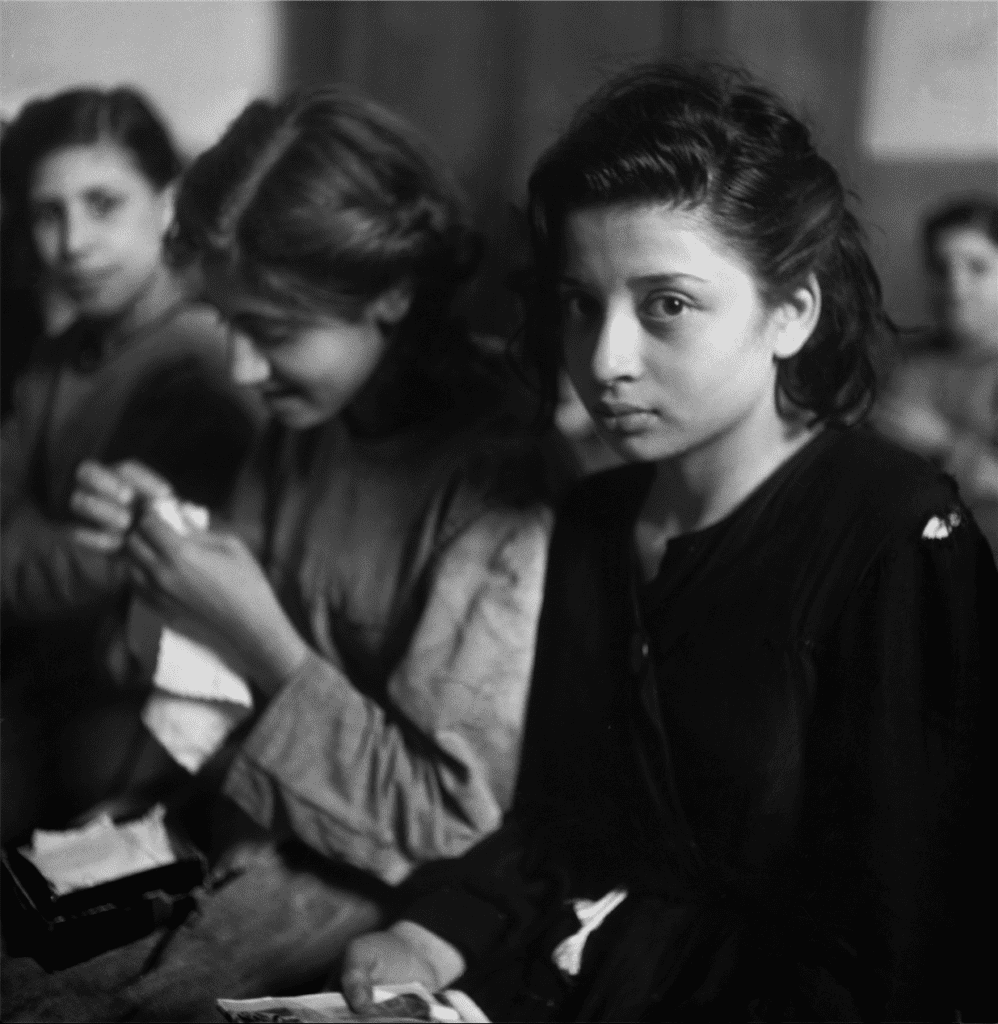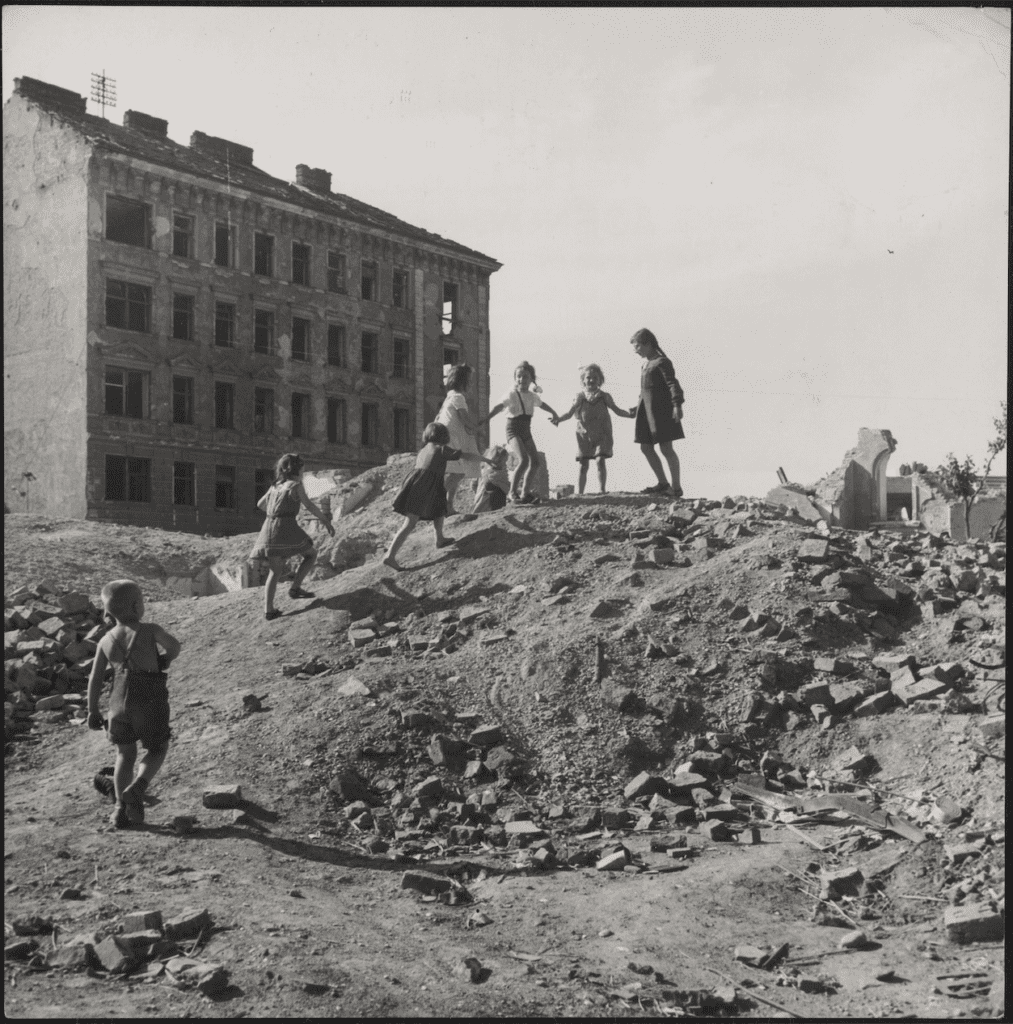In 1947, Seymour, one of the co-founders of Magnum Photos, travelled across Europe’s devastated lands to capture the lives of children who had survived the second world war.
The project was commissioned by the newly formed UNICEF (United Nations International Children’s Emergency Fund), and Seymour documented the organisation’s efforts to provide basic needs – food, shoes and vaccinations – to the children of Europe.
His journey took him to refugee camps, schools, hospitals, residential homes, remote villages and cities reduced to rubble by bombing, to record the impact of war, and its aftermath, on children.

These images were published by Life magazine (1948) and in a book, Children of Europe (1949), published by the United Nations Educational Scientific and Cultural Organisation (UNESCO).
As a counterpoint to Seymour’s work for UNICEF, a selection of vintage prints by Inge Morath, Henri Cartier-Bresson, Elliott Erwitt and Seymour from the 1954 project Children’s World will also be on display, alongside caption sheets and magazine spreads.
Magnum Photos was founded to allow photographers the freedom to pursue their own interests and causes, but alongside this the agency has consistently explored innovative collaborative projects with a global reach.
Children’s World was one such project. Published in Holiday magazine in three parts in 1955 and 1956, the project examined the lives of children in Uganda, Lapland, France, Cuba, Italy, England, Holland and the US, amongst others.

Seymour was born in Warsaw, Poland in 1911 and moved with his family to Russia at the outbreak of the first world war, returning to Warsaw in 1919.
He studied printing in Leipzig and chemistry and physics at the Sorbonne, Paris in the 1930s. After being lent a camera by a friend who owned the pioneering picture agency Rap, he began to work as a freelance photographer and was introduced to Cartier-Bresson and Robert Capa.
From 1936 to 1938 Seymour photographed the Spanish civil war and then went to Mexico on assignment with Spanish Republican émigrés. At the outbreak of the second world war, in which both his parents were killed by the Nazis, he moved to New York and adopted the name David Seymour, serving in the US Army from 1942 to 1945.
In 1947, along with Cartier-Bresson, Capa, George Rodger and William Vandivert, he founded Magnum Photos. He went on to photograph major stories across Europe, including Hollywood stars and the emergence of the state of Israel.
After Capa’s death Seymour became the new president of Magnum. He held this post until 10 November 1956, when, travelling near the Suez Canal to cover a prisoner exchange, he was killed by Egyptian machine-gun fire.
More information is available here.
